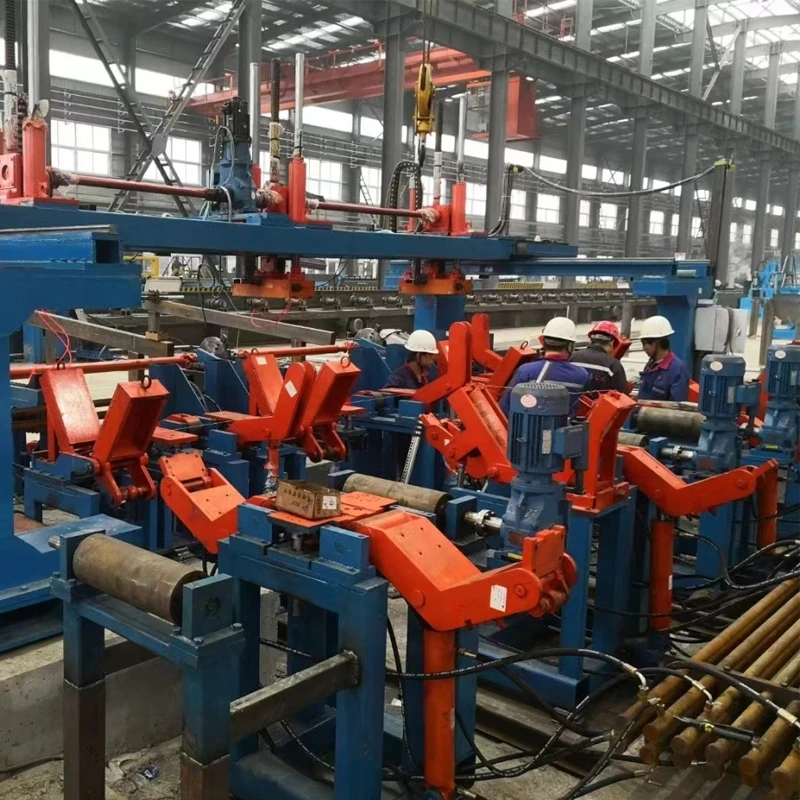manual wire straightener
The Importance and Functionality of Manual Wire Straighteners
In various industries, wire plays a crucial role in the manufacturing and construction processes. Whether used in electrical, automotive, or construction applications, the need for straightened wire is fundamental to ensuring precision and quality in the final product. While many modern tools are available for wire straightening, the manual wire straightener stands out as an essential tool for craftsmen and workers who prioritize efficiency and control.
Understanding Manual Wire Straighteners
Manual wire straighteners are specialized tools designed to straighten bent or coiled wire into a straight line for easier handling and assembly. These devices come in various forms, ranging from simple handheld tools to more complex bench-mounted setups. The primary function of these straighteners is to remove kinks, bends, and twists in the wire, allowing for smoother handling and improved alignment during installation.
Benefits of Using Manual Wire Straighteners
1. Precision Control One of the most significant advantages of manual wire straighteners is the control they afford the user. Unlike automated machines, which may be subject to mechanical glitches or pre-set complications, manual tools allow for a hands-on approach. This means that users can apply the exact amount of pressure needed to straighten the wire without risking damage or overworking the material.
2. Cost-Effectiveness Manual wire straighteners are generally more affordable than their powered counterparts. For small businesses or individual craftsmen, investing in a manual tool can be a financially viable option, especially when the volume of wire processing does not justify the expense of an automated system.
3. Versatility These tools can accommodate various wire types and sizes, making them incredibly flexible. Whether working with thin electrical wires or thicker steel reinforcement bars, manual wire straighteners can adjust to meet the needs of diverse projects.
4. Portability Many manual wire straighteners are designed to be lightweight and portable, allowing them to be easily transported from one job site to another. This portability is particularly advantageous for fieldwork, where setups may need to be quick and efficient without the need for heavy machinery.
5. Durability and Longevity Manual tools are typically built from durable materials that withstand the rigors of regular use. With proper care, a manual wire straightener can last for many years, making it a worthwhile investment for any workshop or job site.
manual wire straightener

How to Use a Manual Wire Straightener
Using a manual wire straightener requires some basic technique to achieve optimal results
1. Preparation Start by choosing the appropriate wire straightener based on the size and type of wire. Ensure the tool is clean and free of any debris that could interfere with the straightening process.
2. Insertion Feed the wire into the straightener, making sure it is positioned correctly. The wire should pass through the straightener’s rollers or guides, aligning with the mechanism designed for straightening.
3. Applying Pressure Gradually pull the wire through the straightener while applying steady pressure. This process helps to smooth out any bends or twists. It's essential to maintain a consistent speed to prevent any potential damage to the wire.
4. Inspection Once straightened, inspect the wire for any residual bends or kinks. If necessary, repeat the process until a perfect straight line is achieved.
5. Cutting and Use After straightening, the wire can be cut to the desired length and prepared for its intended application, whether that be electrical wiring, framework construction, or any other use.
Conclusion
In summary, manual wire straighteners offer a reliable and efficient solution for anyone working with wire materials. Their ease of use, cost-effectiveness, and precision make them invaluable tools in the toolkit of craftsmen and industrial workers alike. By understanding how to properly employ this tool, users can enhance their workflow and ensure that their wire applications meet the highest standards of quality.
-
High Frequency Straight Seam Welded Pipe Production Line-BzZhou Xinghua Machinery Equipment Manufacturing Co., LTD.|line pipe steel&welded gas pipeNewsJul.30,2025
-
High Frequency Straight Seam Welded Pipe Production Line-BzZhou Xinghua Machinery Equipment Manufacturing Co., LTD.|High Precision&Automated SolutionsNewsJul.30,2025
-
High Frequency Straight Seam Welded Pipe Production Line - BzZhou Xinghua Machinery Equipment Manufacturing Co., Ltd.NewsJul.30,2025
-
High Frequency Straight Seam Welded Pipe Production Line-BzZhou Xinghua Machinery Equipment Manufacturing Co., LTD.|Precision Welding, High EfficiencyNewsJul.30,2025
-
High Frequency Straight Seam Welded Pipe Production Line|BzZhou Xinghua|Precision Welding&EfficiencyNewsJul.30,2025
-
High Frequency Straight Seam Welded Pipe Production Line - BzZhou Xinghua|Precision Engineering&EfficiencyNewsJul.30,2025


